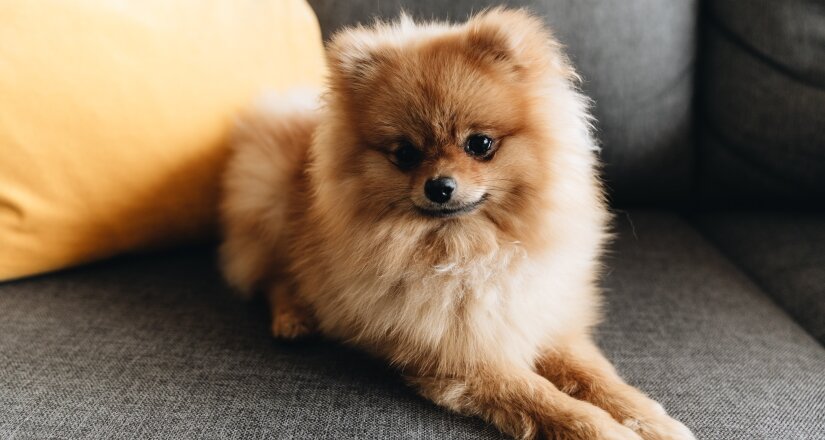



How to Figure Out Whether Pomeranians Are Right For You
The top aspects when considering whether or not Pomeranians are right for you are time, awareness and willingness to take proper care of your new family member. Obviously, your schedule is of utmost importance because the Pomeranian’s most prominent trait is his craving for human affection.
There’s no questioning it, you’re going to love your Pomeranian. He’s a great entertainer and teaching him a new trick is very satisfying. However, improper etiquette can make even the cutest dog a nightmare.
Playing with that sack of fur is so enjoyable you can almost forget about the scratched furniture and the dead shoes. And you would think that so much fur is going to be hellish to deal with.
But once you understand how to prevent any unwanted behavior and you realize you have the tools to do it, you’ll see that Pomeranians aren’t hard to take care of. Owning a Pomeranian is a big commitment if anything for having to be careful not to step on him.
Is this breed good for you?
The first thing you notice is the abundance of fur. You immediately expect him to shed and shed and shed. But the truth is it only takes a few minutes, two or three times a week to keep any furniture hair-free.
The other important thing is trimming their nails. Pomeranians require infrequent bathing so he’s really not high-maintenance. You might feel like you want to get rid of the excess fur between their paw pads and whatnot but it’s really not a big issue.
However, Pomeranian’s teeth tend to build up a lot of tartar, so you’ll need to brush their teeth and make a trip to the vet every once in a while. If you have your veterinarian show you how to brush your Pomeranian’s teeth properly, you can check him up once every couple of months.
Always keep your dog on a leash. This goes for any dog breed; if you’re outdoors you need to keep him on a leash. Even if you’re completely confident in your dog’s training and awareness you shouldn’t let him run loose.
Pomeranians are quite fast and have no regard for oncoming traffic and quarreling with bigger animals; which they almost always lose. In case he does manage to get away make sure he has an ID collar and maybe even a microchip implanted. Pomeranians don’t usually run away but you can never be sure.
One thing you need to look out for is spicy food. These types of dogs have small stomachs and are easily upset by the junk food of any kind. Also, avoid tidbitting them when you eat. They have their food, you have yours.
They beg for you to give them something because they don’t know the difference. You do. If you disregard this important rule you’re going to find yourself quickly hopping in the car for an emergency trip to the vet.
Make sure your friends know this as well, as most of the time they “treat” your dog with food when you’re not there. Tell them about it and try to keep a watchful eye the first few times you leave them alone. It’s a good idea to avoid stomach disturbances, if possible, so as to avoid complications.
Feeding Guidelines
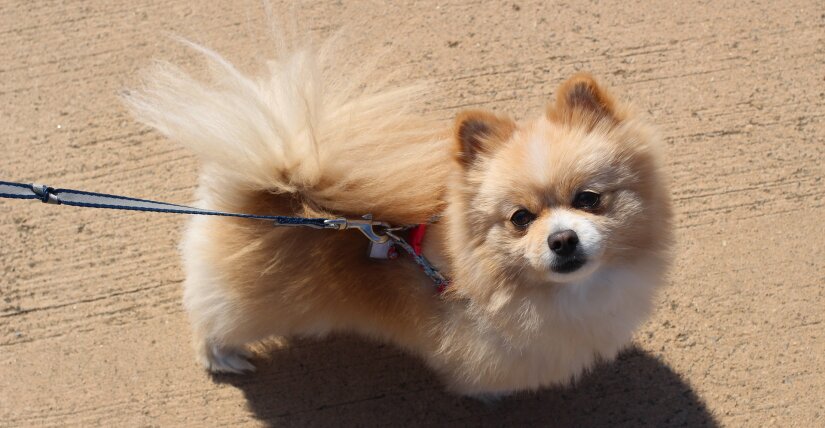
You’re in the store. You’re looking at the shelves. You see 500 types of bags and boxes of dog food and you’re starting to think you should have taken the day off from work. It seems like it’s going to be impossible to go through them all, and even if, you probably won’t remember specific differences between them.
So how can you know which one is the best for your Pomeranian? Which formulation of food is better? What does an “adult formula” mean? Of course, every food product on the market is loaded with a bunch of nonsensical, out-of-this-world marketing words which don’t mean a thing to the regular person.
We are gathered here today to go through a rundown of those ridiculous words and see what’s what. Pet food packages come equipped with words such as: premium, super-premium, gourmet, natural, senior and so on. Basically, these words mean nothing. They have no standard definition, but their use is allowed for reasons that are beyond me.
The Pomeranian is a strong, healthy breed. However, even the healthiest individual can have problems if he is lacking in nutrition. Continuing the topic of which food is good for your Pomeranian, we are looking at dietary supplements, table scraps, general feeding guidelines and drug claims in food products.
Before we discuss those, however, here is an idea you might not have thought about. As a person, you’re probably changing what you’re eating every few days. You don’t eat eggs every day, or pork, you mix it up.
Animal nutritionists recommend switching between two or three different pet food products every few months. Doing so will help prevent any nutritional deficiency, which is a common occurrence when you’re eating only one type of food. Keep in mind to gradually change to the new food in a few days. Mix increasingly bigger amounts of the new food as a transitional process.
Feeding guidelines on the label
There are three important parts on the label you should study before purchasing dog food. The first place is the “life stage claim” where consumers should find the word “feeding”. These words should appear in the nutritional adequacy statement. The word means that the food is proven nutritionally adequate in tests.
The next item you should look for is the manufacturer’s contact information. You only need the manufacture’s name and address, however, most of the time you’ll also have a telephone number there. Upon receiving a phone call, the manufacturers should discuss openly their product while not jeopardizing their proprietary formula.
Finally, you should check the ingredients list. However, this area is subject to consumer preference. These cases are individual and are best consulted with the dog’s veterinarian.
Most of the time, the pet food label can’t provide accurate, detailed information, because nutritional requirements vary even in the same dog, based on age, breed, weight etc.
Also, most pet food labels don’t provide calorie content. However, if you have taken my previous advice and looked up the manufacturer’s phone number you can get this information by calling them. The words “fewer calories” aren’t useful because they only compare it to another product, not overall.
Table scraps are very dangerous. Although you think they’ll be fine eating the food you eat; you can be wrong. And if you are, it will likely prove fatal. Things like chocolate and onions are particularly dangerous for a dog’s digestive system.
Most dietary supplements in pet food products are not approved. Unless they’re approved by the FDA they’re not permitted in pet food. But there will be many a case when you find ingredients like glucosamine which probably shouldn’t be there. It’s best to consult with veterinarians before giving your Pomeranian any kind of supplement.
Drug claims in pet food – what to look out for
Drug claims are not allowed on pet food. An example of a drug claim is stating that the product treats a disease or prevents or reduces the risk of disease. Similarly, discardable claims are “improves skin”, “improves coat”, “prevents dry skin” and “hypoallergenic”. These claims, along with many variants, are allowed because any high-quality food should provide these qualities, it doesn’t make it special in any way.
Some health-related information is allowed. While you can’t say you treat the disease, you can say you help reduce the cause of a disease. One claim manufacturers like to use is “improves doggie breath”. This statement has no regulatory meaning; it’s just a way to promote a product.
One last claim you might see and be impressed by is “recommended by veterinarians”. As you can now expect, it has no regulatory meaning. Rodney Noel, Ph.D., AAFCO pet food committee chair and a chemist at Purdue University says “There is no minimum number or percentage of veterinarians required for a company to be able to state its product is recommended by vets”.
As you can see, there’s quite a lot of information you can find just on the label of pet food. Granted, some of it doesn’t mean anything. But your Pomeranian will be very happy with you anyway because now you know where to look.
Health Profile And Tricky Hereditary Problems
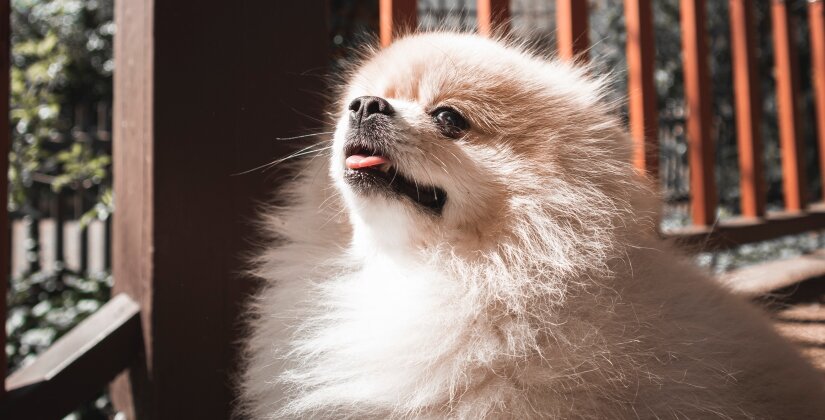
The Pomeranian is a pretty healthy breed, with a lot fewer possible conditions than you would expect in a toy dog. This is quite surprising and it goes to show what an excellent job the Pomeranian breeders have done.
But it makes sense; the list of hereditary diseases a ball of fur can possibly be susceptible to is bound to be minimal. And ironically, there’s a condition called black skin disease in which the Pomeranian’s fur falls but doesn’t grow back.
But seriously, this is a testament to how sturdy and healthy a dog you could use for biceps training (it has the added challenge of chewing your fingers) can be. So anyway, today we are going to talk about PDA. No, not a public display of affection; but Patent Ductus Arteriosus.
Patent ductus arteriosus
To put it simply, at birth, a mammal must adapt from living in the amniotic fluid of the mother’s uterus, where one acquires oxygen from the blood, to good old-fashioned breathing. The DA (no, not district attorney), which is the ductus arteriosus, is a very important, albeit small, blood vessel which facilitates this process.
There is quite a little bit of technicality regarding what happens during the moments immediately before and after birth. Suffice to say, the DA closes completely within a few days.
Problems appear when it doesn’t close. The dog is then left with patent ductus arteriosus. What happens is heart overload because of unnecessary recirculation of blood. It causes congestive heart failure well before the normal lifespan. Most often within two years of birth.
What does this mean?
Since the disease is often fatal within two years, any suspicions of PDA must be researched and confirmed or infirmed immediately. The tricky part is that there are no symptoms until permanent heart damage has already occurred. Tests are required to diagnose the seriousness of the condition and whether or not the dog needs surgery.
Most often, that is to say, 98% of the time, the shunt is from the left to the right side of the heart and, consequently, an increase in blood volume to the lungs leads to labored breathing, poor oxygenation and greatly reduced tolerance to exercise.
In the other cases, the shunt is right to left, resulting in some blood bypassing the lungs entirely. This blood is poorly oxygenated but it is circulated nonetheless. Dogs with this kind of PDA stop during a walk and are reluctant to start again.
Is there treatment for PDA?
Fortunately, if diagnosed early enough, there is hope. In left to right PDA, surgery is recommended. It used to be a thoracotomy (open-chest procedure, complicated stuff), now it’s just the deployment of an Amplatzer canine ductal occluder (no, I don’t know what that means either).
The point is it’s a much simpler procedure, a lot less invasive and is as successful as the old method. In right to left PDA, treatment includes exercise restriction, being in a relaxed, non-stressed state and medication.
The top concern with this condition is actually diagnosing it before it’s too late. The veterinarian will listen for a murmur that sounds similar to a machine at which point X-rays of the chest and an echocardiogram are necessary. Be aware of this possibility and your Pomeranian is sure to live a long and happy life.
Signs of Heatstroke
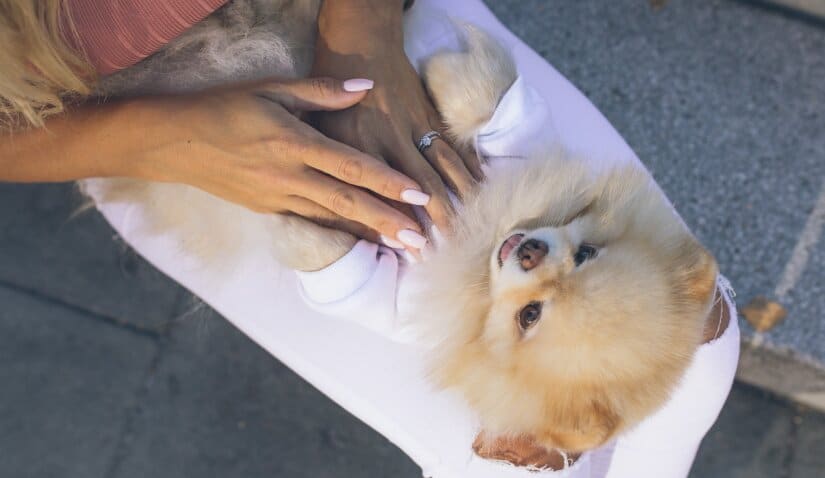
Pomeranians are quite vulnerable to very high temperatures. Leaving your dog in a closed car on a hot day is very dangerous. And if that weren’t enough you see people leave their dogs locked up in the car while they go on a quick errand, unaware of how quickly the temperature can rise to deadly levels.
You might be thinking this is only a little short of paranoia and, if you do, I urge you to try this. On a very hot day, get a couple of sweaters, a pair of long pants and the biggest and warmest jacket you have. The kind of stuff you would wear at the North Pole.
Now dress up with everything and see how far you can last. Most likely you’re sweating like a strawberry collector the second you put the second sweater on. If you were to sit like that for 5 minutes you’ll likely go into a coma. Most dogs, especially those with heavy coats and short muzzles, (much like Pomeranians) are very vulnerable to heat strokes.
What are the signs of heatstroke and what can I do?
Symptoms may vary in severity. Look for excessive panting, bright red tongue and gums or dry and sticky tongue and gums. The dog may be struggling to breathe. He may have seizures; vomiting and bloody diarrhea are tell-tale signs.
If you detect any one of those, immediately have someone prepare the car, or a taxi, for an emergency trip to the vet. Meanwhile, there are things you can do to help cool off your Pomeranian.
Also, even if he appears ok after you give him first aid; don’t take a rain check on that vet visit. Almost every internal organ can be affected and he may develop DIC (Disseminated Intravascular Coagulation), a complex blood problem that is a secondary complication to heat strokes.
First of all, get him out of the sun. Find some shade somewhere and lead or carry him there. Find some cool water and gently rub it on him. A great idea is to wet some clothes with cool water and place them around the head and on the feet.
Take care so you don’t use ice-cold water. Too cold will actually worsen things because blood vessels will constrict to prevent hypothermia. You can offer some ice cubes for your Pomeranian to lick until you can reach the vet.
Finally, take your dog’s temperature
This is extremely helpful to know because signs that your dog is ill are very confusing. You won’t know what symptoms to look for. If you have any suspicions, it’s a great idea to take his temperature and determine if he needs veterinary care.
You can take a dog’s temperature from two places, the rectum and the ear. His normal temperature is between 100.5 and 102.5 degrees Fahrenheit. However, for ear temperature between 100.0 and 103.0 degrees Fahrenheit is normal.
If you want to take his rectal temperature you will need a thermometer, some water-based lubricant, and most likely a friend to help you hold the dog. Since you’ll likely have none of those in hand it’s important to know how to take his ear temperature.
The eardrum is a good indicator of body temperature because it’s full of brain blood. Take the thermometer and place it deep in the horizontal ear canal. If you don’t do it right you won’t get an accurate reading. Of course, if you’re using a mercury-based thermometer make sure you shake it beforehand until it’s below 94 degrees Fahrenheit.
It’s advisable to try taking your dog’s ear temperature a few times when he’s healthy so you can get the hang of it and know how to do it properly when you need it. Alternatively, you can take his rectal temperature as well and compare.
If he has any kind of fever then you’re in for an emergency trip to the doctor. Don’t skip it as it might mean your dog’s life. Heatstroke is very problematic in dogs of all kinds. But Pomeranians, with their big furry coat, are especially vulnerable.
The Best Time For Training
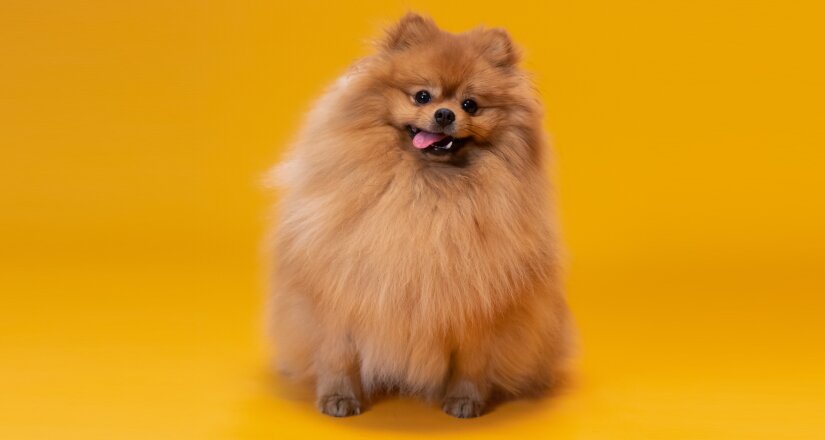
Now that you have the basic layout for how to get the most out of training your Pomeranian let’s start tweaking some of the things you do in one training session. You might think you’re putting too much effort into 10 minutes per day and if you feel that way then use whichever methods appeal to you and hope for the best.
If you want to make sure you have a well-trained dog that you can be proud of who will obey you even in an environment full of distractions, then at least a little tweaking is mandatory.
I’ve talked before about how you should pick the same time every day for training. There are multiple reasons to do this. Primarily, your Pomeranian will learn that that is the time for training, so he will be “in the mood” when you start because he knows it’s going to be enjoyable. He can’t wait to see what new tricks you have for him today.
Of course, you can have multiple training sessions in one day. There is nothing wrong with that. As long as you keep them short and painless, you can have as many as five sessions in one day, maybe even more.
Pick of the best treat for training
When you’re training with your Pomeranian, it’s a good idea to pick his favorite treat. Think about it, if you regularly give him his favorite treat, but when you’re training you’re giving him something worse, he is going to think obeying you is not worth it.
He’s already getting the best just by being there, why should he obey your commands for a lesser treat. It is simple logic but many people overlook this important concept.
One note if you’re using praise as a reward. Use a high tone and put a little enthusiasm in your voice. And remember, if your dog doesn’t obey you in another environment it is most likely because of the different tone you’re speaking in.
Complex commands are not fun
Have you ever thought about why almost every command is a short word? “Sit”, “come”, “fetch”, “down”; these are all short words. Imagine how many dogs would listen if the sit commands would be this “Rex, put your hind legs down, bring your forward legs backwards and stand straight”. Probably not that many.
We’ve already talked about how the dog loses motivation as the commands become more difficult. Likewise, a heavy name for a command is likely to fail for the same reason. When you’re picking command words try to find words that end with a hard consonant, such as C, K or T.
When you’re trying to teach your Pomeranian a complex command it’s a good idea to break it down into several parts. This way you can work on the individual parts and then start leaving some of them out until you only say one word for the whole thing. Congratulations on a job well done.
If you’re going to teach your Pomeranian when it’s time to begin training, you should also teach him when it’s time to end training. Pick a release command and always end training in this fashion: ask him to do something you know he will obey correctly, praise him for a job well done and say the release command. Avoid common words such as “okay” or “good”.
You should choose a special command to be the release command because you don’t want him confusing things when a guest says a random Ok. Also, you’re going to tell your Pomeranian he’s a good dog a lot, so that’s not a good word either.
Remember, keep training sessions short and upbeat. Never punish your dog because this only makes him fearful and awkward. Ignore incorrect behavior and reward correct behavior is your motto.
Basic Commands
Now that we’ve established some basic outlines of how training should go, it’s time to put it into practice. Now we have to use these principles to make them effective. In order to see the results you want with your Pomeranian, you have to consistently use the proper way to conduct training.
So, as we talked about, keep training sessions short and upbeat, making sure you always end on a positive note. It’s important to make the experience enjoyable for your dog; otherwise, he will have less and less incentive to do what you want.
Going into it without expectations will make things a lot easier. Even if your Pomeranian is a champion trickster, when you’re trying something new, keep an open mind. You want to avoid frustration. If you begin to feel frustrated, stop immediately. Take a short break and then start again. It’s no use trying to teach your Pomeranian anything when you are not in the mood.
What is the proper timing for rewarding and praising good behavior?
It’s not only important to do it right, using an upbeat tone and choosing the best treats, you also have to time it right. We have already talked about ignoring bad behavior instead of punishing it. It’s a great thing to do that will keep training relaxed and enjoyable even if the dog isn’t doing anything right.
When he does do something right you have to immediately praise and reward him. I’m talking half a second fast. This way you will make sure the Pomeranian makes the connection between the reward and his correct response.
A poorly trained dog will probably slowly get into a sitting position when you say the word sit. In this case, timing is a little tricky. You don’t want to reward the beginning of his response, but rather the end position. You will reward the correct sitting position for half a second after he completes it.
A word of caution on repeating commands
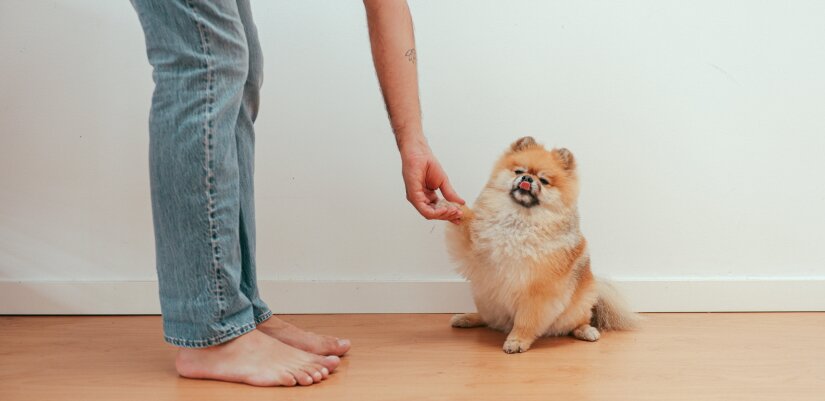
Never repeat the command. It’s just that easy. There is an important thing you need to know about issuing and repeating commands. Once you say a command the dog will keep it in memory for about two minutes. If you repeat it at any point during this time he will likely associate it with the last command.
What happens if the dog catches on that the first instances of command are optional. When you say a command and he doesn’t comply at all simply wait a couple of minutes and then try again.
This is also the idea behind short training sessions. If you keep insisting on one thing the dog will start to mix things up. Not only will he be more confused than ever, he will also become less interested because it’s not fun and rewarding anymore.
Advancing and mastering a command
When you first start out, say we use “sit” as an example. The first time you will have to assist the dog into the sitting position; either raise the treat above his head so he has to sit to reach it, or you can use soft pressure, etc.
As you advance the dog will start to comply on his own, albeit slowly. Once your Pomeranian is correctly performing the response more than 85% of the time it can move on to the next level. You will increase the difficulty by either adding distractions, shortening the response time or lengthening reward time.
Adding distractions will make it harder for your dog to listen to you because he has to listen to you and ignore distractions. But as he learns to trust you more and more and sees that you always have good things for him he will automatically listen to you more.
Shortening response time means you will only reward a faster performance. First reward him for sitting in three seconds, then in two seconds and ultimately, instantly.
Lengthening reward time is the opposite. You will reward a longer performance. After he sits you wait for a few seconds before you give him the treat. You don’t give him treats for short responses anymore. This way you will teach him that he also has to maintain a command until you say so. This is called the time-delay technique.
If you want your Pomeranian to consistently obey you then the easiest way is to follow these guidelines. Then you can begin to shape and perfect his response to the ideal response.
Apartment Life
Pomeranians, commonly known as Poms, are small, fluffy dogs that have light and friendly personalities. They also have a natural territorial instinct, similar to a Miniature Pinscher temperament.
Poms are very loyal and attached to their owners. They like to have a closed circle of friends and family and they become suspicious of strangers and other pets because of it.
Natural watchdogs
Pomeranians are known to bark a lot. Even if you have a quieter dog you can expect him to promptly announce the approach of a stranger. You can expect them to react even more enthusiastically when a family member approaches. Their barking habits make them excellent watchdogs.
What do you do if your dog barks excessively?
The first thing you need to understand is that barking is a perfectly normal activity for dogs. It’s unrealistic to expect your dog to be mute. This is one of his ways to communicate so it’s unfair to deprive him of it.
But your Pomeranian might bark too much. If that’s the case here are a few simple things you can do to mitigate this problem. First of all you need to find out your Pomeranian’s barking triggers. Knowing why he barks increases your success rate.
Next, keep a supply of your Poms favorite treat within arms reach. Now here’s the trick: when he barks once praise him by saying something like “good boy” and then ask him “what’s wrong?” or “what’s happening” then immediately tell him to be quiet.
Now take out your secret weapon (the treat, obviously) and start waving it in front of him. He will instantly stop barking at which point you must continuously praise him for being such a good and quiet dog. When he keeps silent for a few seconds let him have the treat.
If he starts barking again start waving another treat. This time make him stay quiet longer before he gets the treat. Whenever he makes a mistake say “quiet” in a louder, stronger tone. Then reward him as soon as he stops barking. Gradually increase the silence time before he gets the treat. You will see results in no time.
Now that you have trained him to behave let’s see how they do in apartment life
Pomeranians are not excellent apartment dogs but they can do okay. They adapt to new people okay but are a bit protective. They only need the occasional daily walk but human interaction is more important. Also, slightly more time consuming but just as important is:
Coat shedding and grooming requirements
Pomeranians don’t need as much grooming as other hairy breeds. Two to three times per week should suffice. If you think you won’t enjoy grooming your dog then you should rethink your choice.
However, what most people don’t know about Pomeranians is that their coat goes through various stages throughout their life. Many people are unhappy with their puppy when they reach 5 or 6 months and have their first shed. The fact is that every Pomeranian goes through this awkward stage.
When they reach roughly 10 months of age their coat will reappear. There are many other times when he will shed but the total amount of hair they have is determined genetically. Adding supplements to increase your dog’s coat is only going to do harm.
Whenever he is shedding extra brushing will be required. Besides, it’s better to have the dead coat on your brush rather than everywhere else. Also, some areas, particularly behind the ears and the groin, have a high chance of knotting.
Pomeranians are rather high-maintenance but beautiful small dogs that require regular grooming and moderate exercise for a healthy life. They also love to bark and need conditioning to keep them from barking all the time. Yet they are caring and obedient and adapt alright to living in an apartment.
How to Keep Your Dog Out of Trouble
Unlike other types of dogs, toy dogs require special attention, and this is beside the normal coat caring, nail trimming and bathing. This is because they can get in trouble in seemingly normal circumstances.
Most of this is common sense, you look at a Pomeranian and you already know you shouldn’t let him fight other dogs. Nevertheless, these warnings are here to ensure you know exactly what to expect so you are never surprised and always in control.
If you find yourself in a situation in which you don’t know what to do; try to extract yourself and your dog from the situation as quickly as possible. Without further ado, the compendium of how to handle a small dog wisely begins.
How to handle a Pomeranian
The most important aspect is the size of the Pomeranian. Being such a small dog, there are a lot of things that can go wrong if you’re not careful. First and foremost, never leave your dog alone with children.
You may be completely confident in his abilities, but you never know what your small kids will do and how your dog will react to it. The bottom line, it’s dangerous to leave them alone and unsupervised.
Pomeranians are brusquely unaware of their small size, and they have an ironically tough guy nature that can start fights that they will surely lose. So always keep Pomeranians on a leash and avoid confrontations.
You wouldn’t think it, but these small and cute dogs are often the item of choice of thieves, and if you leave them unattended there’s quite a high probability that this will happen to you.
Make sure you don’t leave your dog locked in the car on a hot day. As you well know, canines have trouble dealing with high temperatures, and the car can heat up to deadly levels in a matter of minutes.
Like most toy dogs, Pomeranians can develop patella luxation, which is a condition of the knee in the hind legs. This and broken legs are fairly common, but you can avoid them by discouraging jumping from amazing heights.
The equivalent of amazing heights for a Pomeranian is jumping off the couch. You must remember that Pomeranians are not cats, and even if they land on their feet they’re probably not going to be ok.
Another problem is with the veterinarian. Since the Pomeranian is a very small ball of fur it’s very easy to overdose on one. Make sure your veterinarian knows what he’s doing beforehand.
If you have a competent veterinarian and a devoted breeder that can help you out you’re well on your way to having a long and happy life with your Pomeranian.
Can Your Pomeranian Be a Show Dog
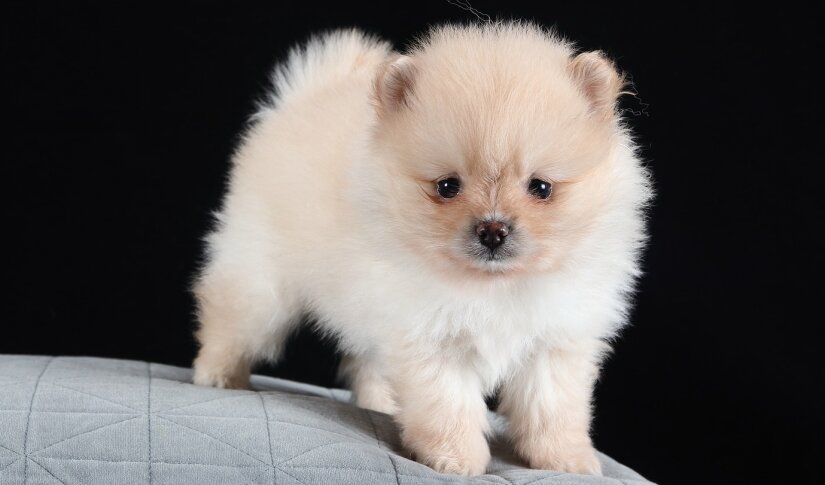
The Pomeranian comes from the region of Pomerania, now part of Germany and Poland. The breed was originally a herding and sled dog, weighed as much as 30 pounds and had a thick, harsh double coat, which he still retains. At that time a relatively unknown breed, the Pomeranian was popularized by Queen Victoria during her reign.
It is she who made the Pomeranian what he is today. She is credited for both creating the miniature Pomeranian breed as well as popularizing it.
A shift in temperament is also notable in the breed’s history, as today the dog is a great companion towards all family members. In the past, he was regarded to favor a specific person.
What can I expect?
Pomeranians are loyal and territorial in nature. They take it upon themselves to alert you of any disturbances around the house. Their loyal nature gives them a strong desire to please, but they are somewhat independent-minded and can be stubborn.
People who know how to tap into the Pomeranian’s great desire to please find out he is very clever and has a lively spirit. Oftentimes, Pomeranian owners feel compelled to take part in competitive show dog events because they are so easy to train.
If you’re trying to train your Pomeranian and you find that you’re not very successful you might want to rethink your approach. Chances are you haven’t established yourself as the pack leader and that’s what’s causing all the problems.
Physical characteristics
Don’t let his size fool you; the dog is an active bundle of energy. Even in its small size, the dog feels sturdy and compact. He is alert to any cues you might give him and curious about what’s what. In an ironic contrast between his size and weight (3 to 7 pounds), his gait is cocky and commanding.
His eyes are dark, almond-shaped; sparkling balls. His signature trait is his thickly plumed tail, often set high and flat on his back. The coat is abundant from the neck to the chest, and on his legs and head it is packed tighter than on the body.
Pomeranians are cute if you take care of them. Grooming is easier than you might think but you have to do it to keep your dog looking good. Their coat will quickly mat in such horrible ways you won’t know what to do with it. So take 5 minutes a day to groom him and he’ll always be a joy to look at.
Are you considering exhibiting?
It seems to be a tendency among Pomeranian owners. Something about their dogs makes them get involved in the show dog world and once you’re in, you don’t get out.
A great bonding activity you can engage in, even if at first you’re just doing it to have fun and impress your friends. It always starts as playtime, but don’t disregard the possibilities of competitive sports.
Should I breed my dog?
Most dog owners are intrigued by the thought of a cute litter of puppies. It’s both cute and profitable, you would think. However, breeding any dog is a serious commitment in time and finance.
And, do you know that Pomeranians frequently require a C-section, and that you may be putting your dog’s life at risk? You would need a lot of information and after you have that you need a lot of time if you’re going to dedicate yourself to this practice.
Not to mention potential health problems which you need to know about. In any case, if you’re bent on this track it’s a good idea to maintain contact with your dog’s breeder as he can help you tremendously along the years.
If you aren’t going to breed your Pomeranian; then spaying and neutering is advisable. Although you should know that spayed and neutered animals are not allowed to compete in AKC Conformation classes, but there are no such restrictions in other events.
Pomeranian Rescue Groups
Southern California Pomeranian Rescue
- Address
- Irvine, CA, USA
- Website
- www.southerncaliforniapomeranianrescue.org
- socalpomrescue@coapc.com
Pomeranian Rescue Group
- Address
- Bay Area, CA, USA
- Website
- www.thepomeranianrescuegroup.org
- Phone
- (510) 6912780
- mattoch@comcast.net
Pom Squad Rescue
- Address
- Galveston, TX, USA
- Website
- www.pomsquadrescue.com
- adoptions@pomsquadrescue.com
Recycled Pomeranians and Schipperkes
- Address
- Dallas, TX, USA
- Website
- www.recycledpoms.org
- Phone
- (214) 7750648
- info@recycledpomeranians.com
Pawsitively Pom Rescue
- Address
- Harrisburg, PA, USA
- Website
- www.pawsitivelypom.rescuegroups.org
- Phone
- (844) 7667297
- pawsitivelypom@gmail.com
Pomeranian Club of MI
- Address
- Michigan, USA
- Website
- www.pcmrescue.pbwebs.com
- pcmrescue@yahoo.com
Pomeranian and Small Breed Rescue
- Address
- Southern Ontario, Canada
- Website
- www.psbrescue.com
- pomeraniansmallbreedrescue@gmail.com
Pomeranian Breeders in the USA
Magix’z Poms (Michigan)
- Address
- Memphis, MI
- Website
- www.magixzpoms.com
- Phone
- (810) 3052395
- magixzpoms@yahoo.com
Poetry Pomeranians (Washington State)
- Address
- Sprague, WA
- Website
- www.poetrypoms.com
- Phone
- (509) 2798445
- poetrypoms2000@yahoo.com
Carleez Poms (Pennsylvania)
- Address
- Clinton, PA
- Website
- www.carleezpoms.com
- Phone
- (412) 8486987
- carleezpoms@comcast.net
Avalon Pomeranians (Idaho)
- Address
- Pocatello, ID
- Website
- www.avalonpom.com
- Phone
- (208) 2513916
- info@avalonpom.com
Happydaypoms (California)
- Address
- Stockton, CA
- Website
- www.happydaypoms.com
- Phone
- (504) 4104995
- happydaypoms@gmail.com
Poms and Paws (California)
- Address
- Vista, CA
- Website
- www.pomsandpaws.com
- Phone
- (760) 2075661
- pomsandpaws1@gmail.com
Mountain Valley Poms (Georgia)
- Address
- Calhoun, GA
- Website
- www.mountainvalleypoms.com
- Phone
- (770) 5476344
- georgiaprincessg@aol.com
Von Kachler Pomeranians (Oklahoma)
- Address
- Ardmore, OK
- Website
- www.pomsvonkachler.com
- Phone
- (815) 9533232
- gmkachler@yahoo.com
New River Farms (North Carolina)
- Address
- Boone, NC
- Website
- www.newriverpetservices.wixsite.com/newriverfarmspoms
- Phone
- (828) 3864021
- newriverfarms@outlook.com
Peekapom Hollow (South Carolina)
- Address
- Ridgeville, SC
- Website
- www.peekapomhollow.com
- Phone
- (843) 6707279
- pawmettopi@gmail.com
Posh Puppies (Indiana)
- Address
- Warsaw, IN
- Website
- www.poshpuppiesindiana.com
- Phone
- (574) 3776362
Draco Kennels (Kentucky)
- Address
- Hardinsburg, KY
- Website
- www.dracokennels.com
- Phone
- (270) 6172692
- dracokennels@bellsouth.net
Buhrman Shelties & Prancing Poms (Indiana)
- Address
- Berkeley Springs, WV
- Website
- www.buhrmankennel.com
- Phone
- (301) 4717001
- sheltiemist77@aol.com
Breeders in Canada
TerraMarie’s CKC Reg’d Pomeranians
- Address
- Ryley, Alberta
- Website
- www.terramariepoms.com
- Phone
- (780) 2391940
- terramarie@terramariepoms.com
Kristari Reg’d
- Address
- Southern Ontario
- Website
- www.kristari.com
- Phone
- (416) 4596225
- chris.warden52@outlook.com
Pinecrest Kennels Perm. Reg’d.
- Address
- Bowmanville, Ontario
- Website
- www.sites.google.com/view/pinecrest-kennels/
- Phone
- (905) 4356545
- pinecrest@rogers.com
SugarLamb Pomeranians
- Address
- Ontario
- Website
- www.sugarlamb.ca
- mcq@tnt21.com
Winterhaven Kennels
- Address
- Arthur, Ontario
- Website
- www.winterhaven.ca
- Phone
- (519) 8482982
- info@winterhaven.ca
Breeders in the Great Britain
Pommania Pomeranians
- Address
- South Shropshire
- Website
- www.bestpoms.com
- Phone
- (0771) 3822334
- zoe@pommaniapoms.com
Pompetite Pretty
- Address
- Horsham
- Website
- www.pompetitepretty.co.uk
- Phone
- (0747) 5594336
- pompetitepretty@gmail.com
Pomamour Pomeranians
- Address
- Winchester, Hampshire
- Website
- www.pomamour.co.uk
- Phone
- (0798) 0382885
- a.newbery@icloud.com
Altina Toy Dogs
- Address
- Altina
- Website
- www.altina.co.uk
- Phone
- (0120) 6738898
- tina@altina.co.uk
